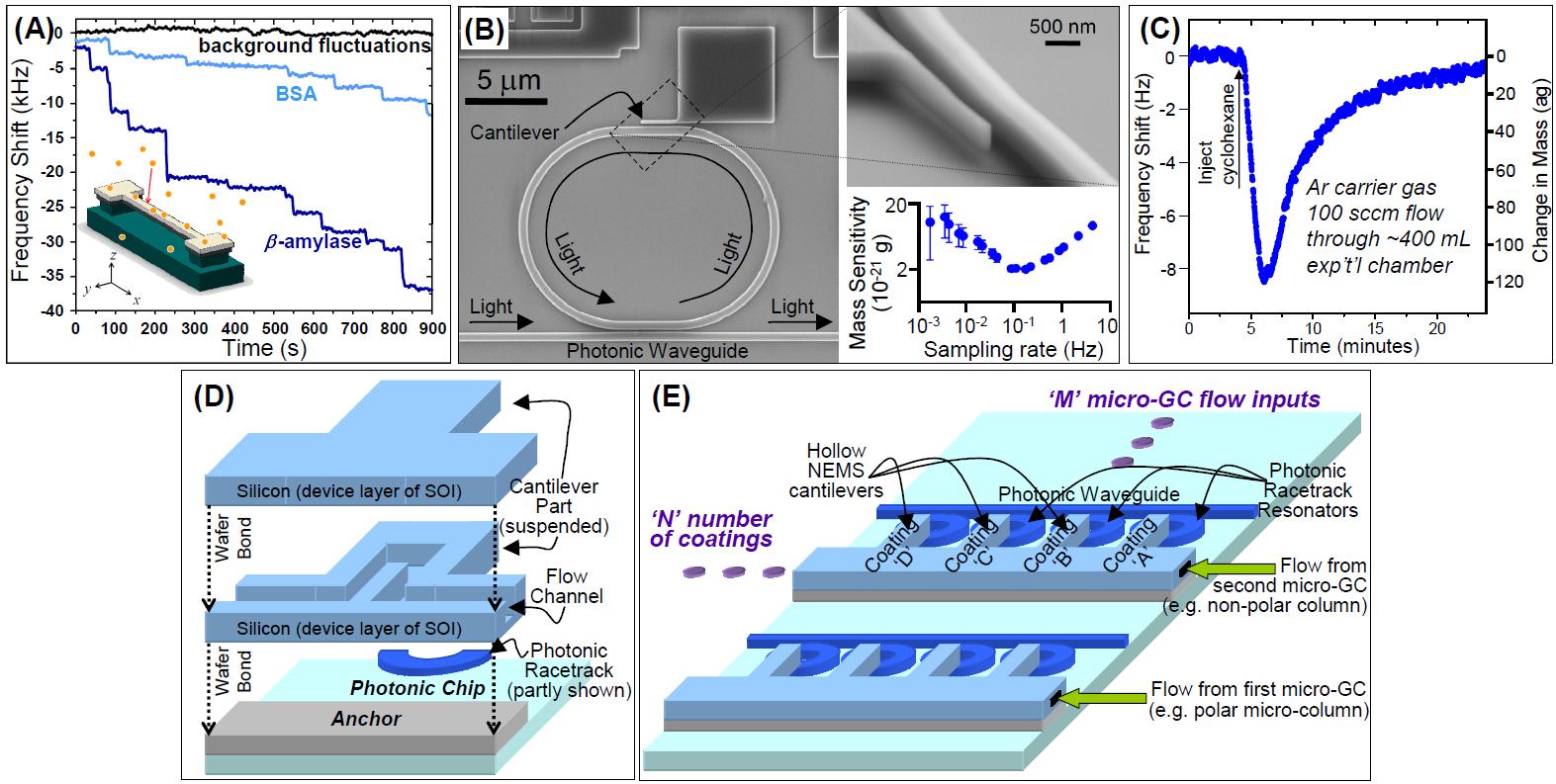

100 nm
Research
(Click here for an overview of our group's research up until 2010.)
NEWS: 2 new graduate student positions are available. See descriptions here.
Photonically transduced NEMS for chip based gas chromatography
Towards GC-MS all on-chip. Illustration of nanomechanical sensing and quantification of chemical compounds.
(A) Mode of operation. When molecules land on a NEMS device, the added weight shifts the frequency of the mechanical resonance. Here, single copies, dimers, and trimers of heavy macromolecules (BSA is bovine serum albumin) landing on a doubly-clamped beam device cause abrupt frequency shifts for each distinct landing.
(B) Photonic readout of NEMS. The most sensitive method to monitor the NEMS frequency has recently been shown to be photonic. Light propagates down a photonic waveguide, circulates in a racetrack optical resonator, and interacts with a cantilever for exquisite sensing of the cantilever position. This translates into zeptogram mass sensitivity in vacuum.
(C) Demonstration of NEMS gas detection. A carboxyl (COOH) coated NEMS device responds to cyclohexane transient adsorption at atmospheric pressure.
(D) Concept for coupling microflow rates to NEMS. A flow channel incorporated inside of a NEMS cantilever will allow quantitatively measuring gas compounds as they flow-through.
(E) Multiplexed all-on-chip micro-GC concept. Hollow cantilever arrays will allow multi-dimensional (MxN) detection and quantification of the outputs of micro-GC columns that are co-located on the same microchip. Each cantilever in a row can have its inner walls functionalized with a different coating for added dimensions of sensing. Each row can sense the output of a different micro-column.
